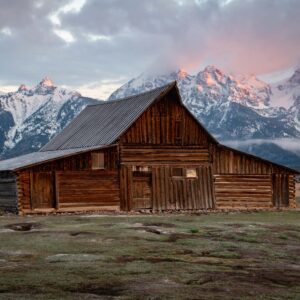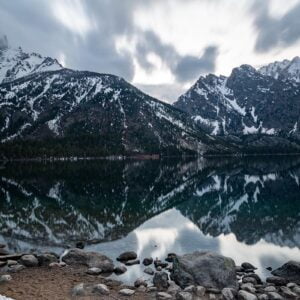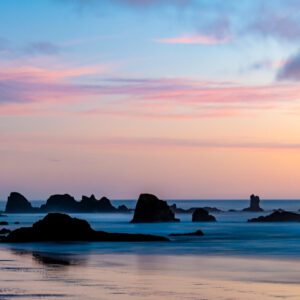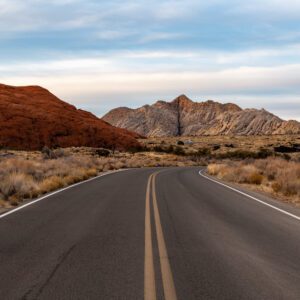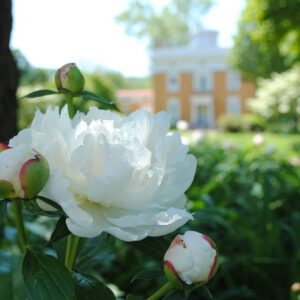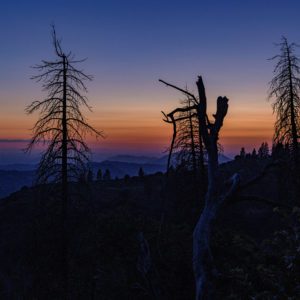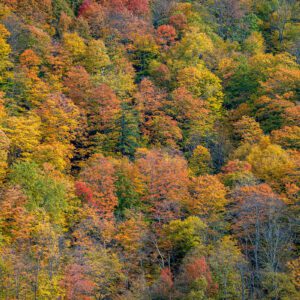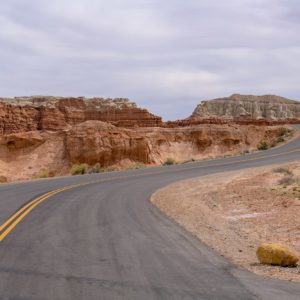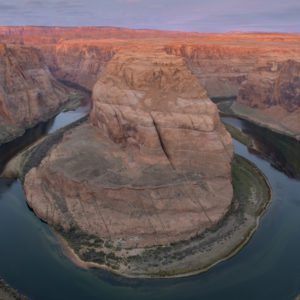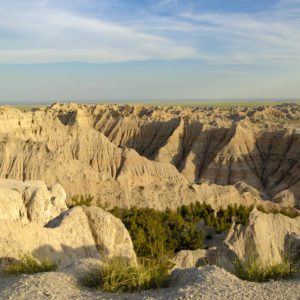Snow Squalls and Close Calls: Off-Peak Season in Yellowstone National Park
Locations Visited:
| • Artist Point • Bozeman • Grand Prismatic Spring | • Grand Teton National Park • Jackson Hole • Yellowstone National Park |
Despite a substantial amount of experience visiting National Parks, I nearly found myself stranded overnight in Yellowstone National Park last Monday.
I’m a proponent of visiting National Parks during off-peak seasons, generally November to May for most parks. However, in the case of Yellowstone National Park and Grand Teton National Park, the second week of May is still a bit early for tourists and wildlife alike. Grizzly bears are just waking up from their seasonal slumber, and several roads in the parks are still closed to traditional motor vehicles thanks to potentially treacherous or impassible conditions.
Temperatures and precipitation are still unpredictable in Western Wyoming at this point in the calendar, and you’re just as likely to get 30 degrees and whiteout conditions as you are to get sunburned. Over the course of just a few days in the region, I experienced both.
Still, I didn’t expect snowflakes or road barriers in mid-May. My plan when I landed in Bozeman, Montana was originally to capture some shots at the Grand Canyon of the Yellowstone, and then head south for Jackson, Wyoming. The half-baked plan looked great on my phone; I’d downloaded offline Google Maps anticipating a lack of cellphone coverage, and the directions depicted a leisurely drive that would land me in Jackson just around sundown. If I took my time taking photos along the way, which was almost a certainly, I’d roll into town an hour or so after dark.
Since my road trips are usually based around landscape photography, I regularly err on the side of pulling over too much; my itineraries are intentionally loose. Looking to plan your own trip to Yellowstone? Check out this Ultimate Guide to planning a trip to Yellowstone.
On a past trip, I’d already captured shots at Boiling River near Gardiner, Montana, so I figured if I was going to stop, I’d do it earlier along Route 89, just south of Livingston.
And before I knew it, I was parking on a dirt lot just off the banks of the Yellowstone, where I found a tripod-worthy backdrop. The composition featured a long exposure of the river in the foreground set against a tree-lined hill in the left half of the frame, while a more distant mountain range sat snow-capped and tucked miles behind a few barren trees on the river’s edge. The juxtaposition of multiple seasons in the viewfinder assured me that I’d found a sun-drenched postcard-worthy landscape without much effort.

The banks of the Yellowstone River just south of Livingston, Montana on Monday, May 10, 2021. Photo by Peter Stringer.
Flying into Bozeman from Las Vegas just a few hours earlier, I had been greeted with this crisp spring afternoon, and that pleasant welcome distracted me from remembering that changes in elevation often mean changes in the weather. Upon reaching the Roosevelt Arch entrance of Yellowstone, the park was blanketed in a dense fog, draped over the elk snacking on grass and shrubs just yards behind the park’s northern barrier.
Given my shoulder season timing, I essentially had Yellowstone National Park to myself. I saw only a handful of other visitors on this evening, which makes for a unique experience during the daylight, but does add an element of danger especially after the sun goes down.
Without traffic jams (or bison jams!) it’s about an hour and change of driving from the Albright Visitor’s Center to Artists Point, which provides a dramatic view of the Grand Canyon of the Yellowstone. This was my fourth or fifth trip to Yellowstone, yet I’d only once taken photos from Artist’s Point. On prior trips to the park, I wasn’t outfitted with the skills or equipment to properly capture this majestic view of the 160,000 year-old chasm that cradles the Yellowstone River below a pair of waterfalls. Armed with a tripod and a decent filter, this time around, I was excited to finally take proper photographs at sunset. I didn’t have to jockey for a spot to set up either; I only saw one other visitor with his dog in the 30 minutes or so I spent at Artists Point.
Of course, as snow drifts picked up beneath the heavy fog, it wasn’t totally clear if I’d even be able to see the canyon, river or waterfall, let alone the sun. Sometimes inclement weather conspires with a sunset to throw amazing colors across the sky. Other times, it robs the atmosphere of any drama. You just have to stick around, be patient, and hopefully be rewarded. On Monday, May 10, as a hidden sunset developed, the payoff was a half-transparent haze that shrouded the backdrop of snow-covered trees and loud rushing waters cascading into the mustard-brown canyon with unrelenting vigor.
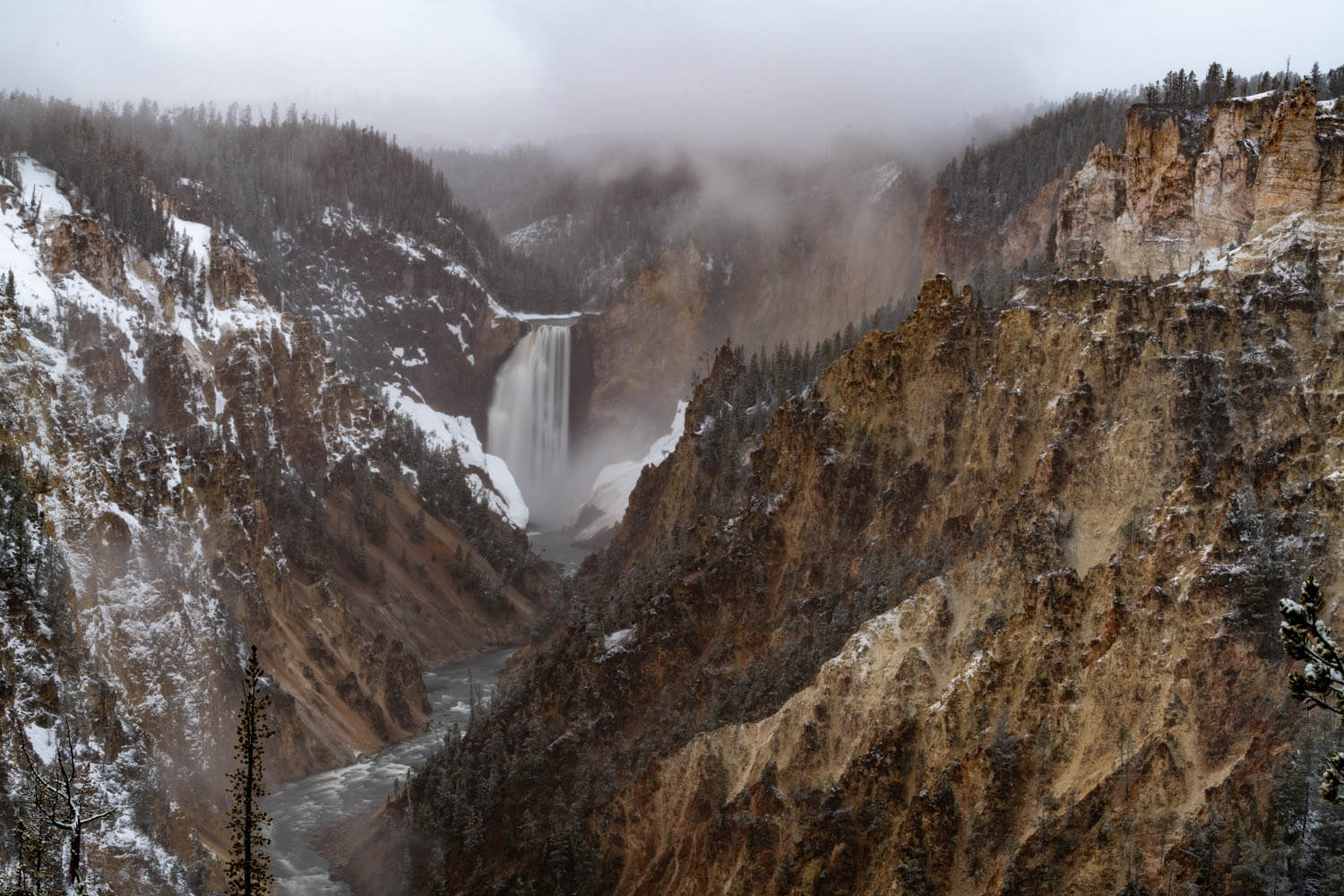
The Grand Canyon of the Yellowstone River covered in fog and snow on May 10, 2021. Photo by Peter Stringer
The Grand Canyon of the Yellowstone doesn’t get the same publicity as Old Faithful or even the polychromatic Grand Prismatic Spring, but in terms of grandeur, the canyon might be the park’s most impressive feature. Even in limited visibility, the canyon’s sheer size is overwhelming, its depth is knee-rattling and the pulsating power of the rushing waters is palpable.
The photos ended up looking better than I’d hoped thanks to a little dehazing in Adobe Lightroom, and if anything, they told the story of the day far better than any words I could put together here. But while the weather produced some unique photos, it also presented challenging driving conditions. And as I charted a course south for Jackson, I was running out of daylight and still neglecting the park’s road closure schedule. Thankfully, I wasn’t running out of gas.
Not yet realizing my folly, I took my time pulling over with a zoom lens poked out the driver’s side window trying to capture bison grazing in the snow. Cranking the ISO on my Nikon D850, I got a few passable shots before pressing on for the park’s south gate.
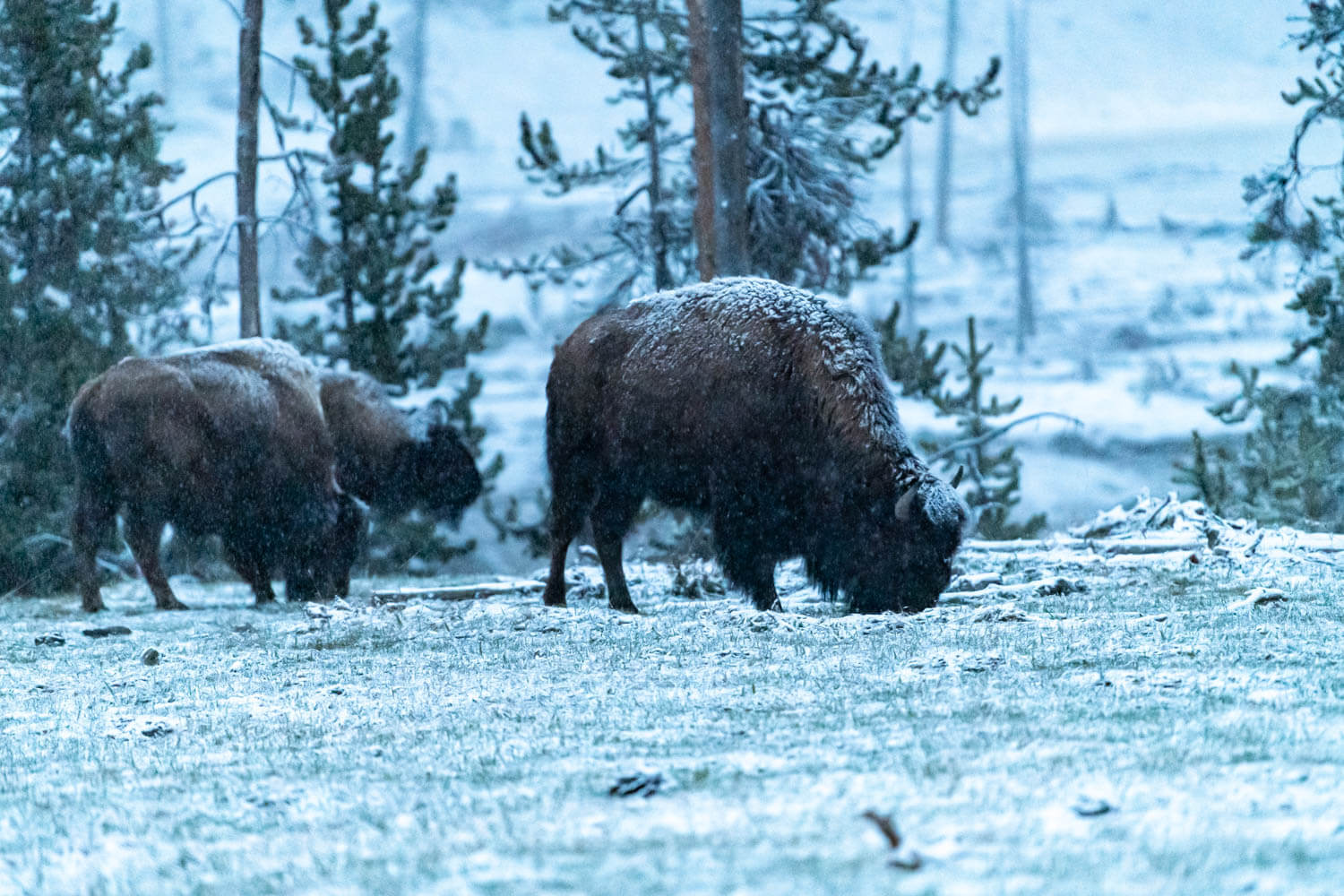
Bison grazing in the snow at Yellowstone National Park on May 10, 2021. Photo by Peter Stringer
By the time the road was choked off with no warning beside a large “STOP” sign and a padlocked gate across the road, the sun was long gone and reality set in. I’d have to retrace my route north along Route 191 and escape the park at the West Yellowstone exit just north of Idaho’s eastern tip.
With nothing but my headlights to guide me through winding roads and meandering bison, I knew I had to take my time. I figured the bison might be more likely to wander into the highway with so few cars on the road. In dark, occasionally white-out conditions, I might only have a split second to react. Sub-freezing temperatures also threatened black ice spinouts.
Take it slow, I told myself.
The next 90 minutes or so were a crawl through the park. Thankfully, white knuckles and a healthy dose of caution led me to the West Yellowstone exit without incident. As I pulled up to my booked-on-the-spot hotel, relief washed over me, quickly followed by the thought that I’d enjoyed a Yellowstone experience that few of the park’s 3.8 million visitors in 2020 had the opportunity to replicate.
Videos:
This time, it's OK to leave a trace (Review)
There are no reviews yet. Be the first one to write one.
